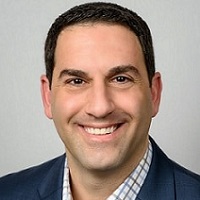 By John Pagliuca, Vice President, Life Sciences, SCIO Health Analytics
By John Pagliuca, Vice President, Life Sciences, SCIO Health Analytics
Twitter: @SCIOanalytics
It takes seeing things in a different light to break out of a rut. So, oftentimes when a teacher, a friend, a business partner, a relative, or even a stranger provides that one piece of much needed insight, the proverbial light bulb goes off. It is then possible to finally move forward and start experiencing life in new ways.
As healthcare providers enter into value-based care models, they need to break out of their long-held patterns – and strive to make the continual improvements that will help them succeed. But who will flip the switch and enable them to see things in a new light? Life sciences companies can help by offering providers a variety of insights that they simply can’t glean from their own electronic health records (EHR) systems.
Indeed, life sciences companies can support their sales and marketing teams by leveraging the data gathered from a broad range of healthcare organizations and delivering insights to change the way care is delivered on an individual and population basis. By feeding the integrated and standardized data from those disparate healthcare organizations into next-generation predictive analytics, they can develop insights that help providers do things differently. More specifically, these life-sciences teams can:
- Help providers identify which treatments have proven most effective for patients with isolate or co-morbid conditions. This can help drive better outcomes, while reducing waste, duplication, and the overall cost of care.
- Enable providers to view their actions in terms of entire populations, not just individual patients. With data about asthma medication sales, along with prescription and claims data obtained from a multitude of providers, life sciences companies can provide a geographical map that displays where asthma “hot spots” exist.
- Allow providers to determine who might be likely to be affected by certain conditions. By adding Zip+4, demographic, and socioecono mic data into the analytics mix, life sciences companies can create personas that represent segments of the population who share similar attributes and, therefore, are more likely to suffer from similar diseases or conditions.
- Empower providers to move forward with confidence. By analyzing usage and outcomes data from a broad cross-section of providers, life sciences companies can detail how effective their products have been in managing or resolving a particular condition across specific populations/personas and relative to defined co-morbidities – making it possible to treat patients with greater precision.
These are just a few of the insights that life sciences companies can deliver to their healthcare professional targets, helping them to make enhance the delivery of patient care. Can you think of any others?
This blog was based on “Why Data is the Key to Driving Closer Provider/Life Sciences Collaboration,” an article that appeared in Healthcare Business & Technology.
This article was originally published on SCIO Health Analytics and is republished here with permission.
